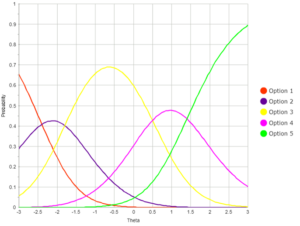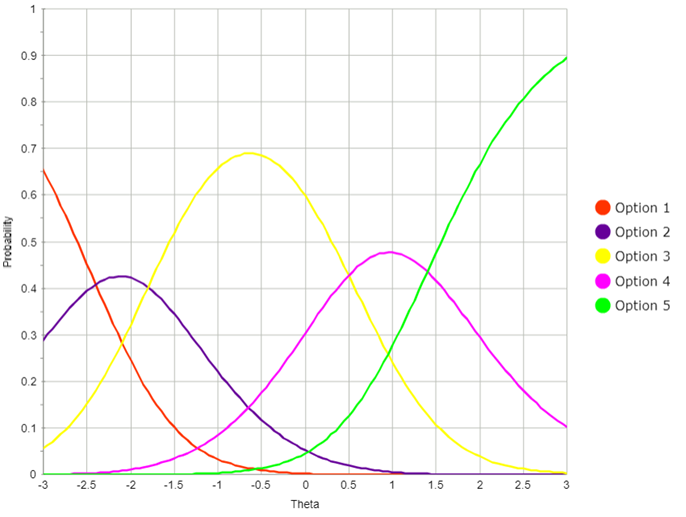What is a Rubric?
A rubric is a set of rules for converting unstructured responses on assessments—such as essays—into structured data that can be analyzed psychometrically. It helps educators evaluate qualitative work consistently and fairly.
Why Do We Need Rubrics?
Measurement is a quantitative endeavor. In psychometrics, we aim to measure knowledge, achievement, aptitude, or skills. Rubrics help convert qualitative data (like essays) into quantitative scores. While qualitative feedback remains valuable for learning, quantitative data is crucial for assessments.
For example, a teacher might score an essay using a rubric (0 to 4 points) but also provide personalized feedback to guide student improvement.
How Many Rubrics Do I Need?
The number of rubrics you need depends on what you’re assessing:
- Mathematics: Often, a single rubric suffices because answers are either right or wrong.
- Writing: More complex. You might assess multiple skills like grammar, argument structure, and spelling, each with its own rubric.
Examples of Rubrics
Spelling Rubric for an Essay
| Points | Description |
|---|---|
| 0 | Essay contains 5 or more spelling mistakes |
| 1 | Essay contains 1 to 4 spelling mistakes |
| 2 | Essay does not contain any spelling mistakes |
Argument Rubric for an Essay
Prompt: “Your school is considering eliminating organized sports. Write an essay for the School Board with three reasons to keep sports, supported by explanations.”“
| Points | Description |
|---|---|
| 0 | Student does not include any reasons with explanation (includes providing 3 reasons but no explanations) |
| 1 | Student provides 1 reason with a clear explanation |
| 2 | Student provides 2 reasons with clear explanations |
| 3 | Student provides 3 reasons with clear explanations |
Answer Rubric for Math
| Points | Description |
|---|---|
| 0 | Student provides no response or a response that does not indicate understanding of the problem. |
| 1 | Student provides a response that indicates understanding of the problem, but does not arrive at correct answer OR provides the correct answer but no supporting work. |
| 2 | Student provides a response with the correct answer and supporting work that explains the process. |
How Do I Score Tests with a Rubric?
Traditionally, rubric scores are added to the total score. This method aligns with classical test theory, using statistics like coefficient alpha (reliability) and Pearson correlation (discrimination).
However, item response theory (IRT) offers a more advanced approach. Techniques like the generalized partial credit model analyze rubric data deeply, enhancing score accuracy. (Muraki, 1992; resources on that here and here).
Example: In an essay scored 0-4 points:
- An average student (Theta = 0) likely scores 2 points.
- A higher-performing student (Theta = 1) likely scores 3 points.
An example of this is below. Imagine that you have an essay which is scored 0-4 points. This graph shows the probability of earning each point level, as a function of total score (Theta). Someone who is average (Theta=0.0) is likely to get 2 points, the yellow line. Someone at Theta=1.0 is likely to get 3 points. Note that the middle curves are always bell-shaped while the ones on the end go up to an upper asymptote of 1.0. That is, the smarter the student, the more likely they are to get 4 out of 4 points, but the probability of that can never go above 100%, obviously.

How Can I Efficiently Implement a Scoring Rubric?
Efficiency improves with online assessment platforms that support rubrics. Look for platforms with:
- Integrated psychometrics
- Multiple rubrics per item
- Multi-rater support
- Anonymity features
These tools streamline grading, improve consistency, and save time.

What About Automated Essay Scoring?
Automated essay scoring (AES) uses machine learning models trained on human-scored data. While AES isn’t flawless, it can significantly reduce grading time when combined with human oversight. Of course, you can also ask LLMs to grade essays for you, but this lacks accuracy and validity – that is, you don’t have actual evidence like if you scored 10,000 essays by humans and then analyzed the data.
Final Thoughts
Rubrics are essential tools for educators, offering structured, fair, and consistent ways to assess complex student work. Whether you’re grading essays, math problems, or projects, implementing clear rubrics improves both assessment quality and student learning outcomes.
Ready to improve your assessments? Request a demo of our online platform with an integrated essay marking module!

Nathan Thompson earned his PhD in Psychometrics from the University of Minnesota, with a focus on computerized adaptive testing. His undergraduate degree was from Luther College with a triple major of Mathematics, Psychology, and Latin. He is primarily interested in the use of AI and software automation to augment and replace the work done by psychometricians, which has provided extensive experience in software design and programming. Dr. Thompson has published over 100 journal articles and conference presentations, but his favorite remains https://scholarworks.umass.edu/pare/vol16/iss1/1/ .

